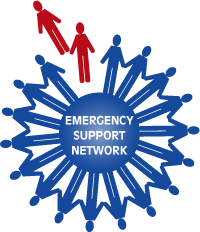Workplace aggression is any behaviour, be it verbal, written or physical, that leads employees to believe that their personal safety is at risk. With rising stress and job insecurity, workplace aggression is a very real problem and it’s very important to be aware if your workplace is at risk. Employees may be vulnerable to real, physical harm and even the threat of it can lead to serious consequences. Managers and employers must take practical, effective steps to ensure that aggression in the workplace is discouraged and culprits identified as early as possible.
According to a recent report by Safe Work Australia, an overwhelming 65% employees felt unsafe or exposed to aggression at different times while at work. Younger employees were found to be especially a risk. Threats can originate from co-workers, customers, clients, suppliers or any other person an employee may interact with professionally. It is the manager’s responsibility to ascertain employee safety and wellbeing. The fact is that whether situational or chronic, most people display their negative behaviour where they spend a lot their time – at work is invariably one of these places.
Exposure to workplace aggression can result in deterioration of physical, mental and emotional health which in turn may have serious financial implications to the employer as well to the economy. Reports indicate that over recent years, more than $61.8 billion has been paid in compensation for workplace disease and injury claims.
Impending workplace violence can often be identified by a number of red flags. Violence and aggression can be preceded by common acts as whispered conferences at the water cooler or dismissive passive-aggressive behaviour. The victim is often aware of being a target but may be confused about the reason or even the source. Violent behaviour is often covert in nature and can stem from hidden anger or resentment. The perpetrator may try to damage equipment, personal belongings or show his or her anger in clandestine ways.
Aggression spreads, creates a toxic office environment and sabotages productivity. Any resulting violence may lead to injuries and legal action including punitive fines or even imprisonment in extreme cases. Heartfelt and personal emotions need a healthy outlet and the formality of the workplace environment usually prevents honest expression of feelings. Hostility has an impact on self-worth and individuals with mental stress issues are especially vulnerable.
As manager, be on the alert for employees who leave angry notes, write abrasive emails to avoid face-to-face communication or do less than they are required to do. Anger can result from real or perceived feelings of victimisation or resentment at being side-lined. The cumulative effect can manifest itself physically as chronic anxiety, depression with elevated risks for blood pressure or heart disease. Behavioural effects could include lack of cooperation, hostile interactions, physically assaulting a colleague or damaging equipment.
A survey conducted by Australia’s Nurses Career Allied Health found an alarming 79% of nurses surveyed admitted to being victims of workplace aggression. The use of recreational drugs and people suffering from mental health issues are regularly featured in news reports resulting in violence to frontline staff such as paramedics, nurses, doctors and security staff. Although particularly prevalent in healthcare aggression is widespread and may and does occur in every kind of workplace.
Excessive micromanagement, frequent criticism, inadequate salary pay-outs and long hours of work can also fuel anger and aggression. More personal factors could include substance abuse, depression or a history of violent behaviour. Aggression can occur at the individual or group level where a group of individuals may victimise a target. It’s very important to be alert to employee wellbeing and safety and to nip aggression in the bud before it blows out of control. Regular, informal talks with your employees can help identify victims of covert aggression. It is useful to include reminders of appropriate behaviour as a topic at regular staff and team meetings and review any critical incidents to enable examination of antecedents and possible remedial actions for prevention. If you observe abnormal behaviour, verbal abuse or threats of physical violence, it’s time to take remedial action immediately.
We, at ESN, are happy to offer our trustworthy services in the field of people risk management. Our experienced consultants can recommend the best solutions for preventing and managing workplace aggression or violence. Please feel free to contact us with your queries and questions regarding workplace psychosocial hazards such as aggression and violence.
References:
https://www.9news.com.au/2018/09/27/16/28/australian-workplace-aggression-how-to-defend-yourself
https://www.ihm.edu.au/blog/2017/04/18/violence-against-nurses/





